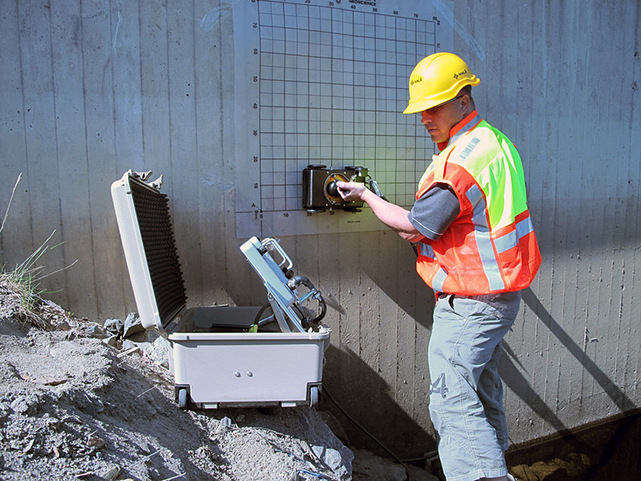Concrete Scanning: An Important Step Towards Making Certain Structural Integrity and Safety
In the realm of building and construction and facilities maintenance, the significance of concrete scanning can not be overemphasized. By employing advanced innovation and methods, concrete scanning serves as a crucial tool in ensuring that the stability and safety of bridges and buildings are upheld to the greatest standards.
Relevance of Concrete Scanning
Concrete scanning plays a vital role in making certain the structural honesty and safety of structures and infrastructure jobs. By utilizing sophisticated technologies such as ground-penetrating radar (GPR) and electro-magnetic induction, professionals can non-destructively check concrete structures to find potential flaws, voids, embedded things, and reinforcement layout. This procedure allows very early detection of abnormalities that could endanger the stability of a structure, protecting against costly damages and making certain the safety of passengers.
Before drilling, cutting, or coring right into concrete, scanning aids recognize the exact places of rebar, post-tension cords, and other ingrained components, lowering the danger of unexpected hits that could lead to architectural weak points. Furthermore, concrete scanning aids in quality control by validating the density of concrete covers and discovering any discrepancies that might impact the overall durability of the framework.
Technology for Concrete Inspection

Benefits of Very Early Discovery
Prompt detection of structural problems can dramatically reduce dangers and make certain the long life of construction jobs. By determining possible troubles at an early stage in the building procedure, stakeholders can take aggressive actions to address issues before they escalate into bigger and a lot more pricey troubles. Among the key benefits of early detection is the prevention of structural failures, which can position major security risks and result in job delays and monetary losses.
Furthermore, early detection enables timely repairs and upkeep, which can aid expand the life-span of the framework. By attending to problems immediately, building and construction groups can prevent expensive repair work or even the need for early replacement of architectural parts. This aggressive technique not only saves time and cash yet likewise improves the overall safety and security and durability of the building and construction task.
Furthermore, early discovery can enhance job planning and decision-making by giving stakeholders with useful insights right into the problem of the structure. Armed with this details, job managers can make enlightened options concerning construction materials, timelines, and methods, leading to a lot more effective Source and effective job outcomes.
Making Sure Structural Stability
Ensuring the architectural stability of a building project is vital to its safety and long life. Architectural stability refers to the capability of a building or facilities to preserve its kind and function under numerous loads and environmental problems. To accomplish this, thorough evaluation and surveillance of the structure are necessary. Concrete scanning plays an essential duty in guaranteeing architectural security by detecting prospective problems such as spaces, delamination, or support corrosion that might endanger the honesty of the structure in time.
By making use of advanced scanning technologies like ground-penetrating radar (GPR) and electromagnetic induction, construction professionals can non-invasively inspect concrete structures to identify locations of concern beneath the surface area. This aggressive strategy permits for the very early discovery of flaws or weaknesses, enabling prompt repairs or support to avoid architectural failings.
Routine concrete scanning during different construction stages and throughout the life process of a framework can help keep its security, reduce risks, and guarantee the safety of owners. By focusing on structural security via concrete scanning, building projects can boost their durability and toughness, eventually adding to higher safety and long life.

Preventing Essential Failings
Executing regular inspections, such as concrete scanning, can expose surprise problems like spaces, splits, or corrosion that might jeopardize the honesty of a structure. By utilizing sophisticated scanning modern Clicking Here technologies like Ground Passing through Radar (GPR) or Concrete X-ray, engineers can non-destructively evaluate the problem of concrete and recognize weak factors that require support or repair work.

Verdict
To conclude, concrete scanning plays a vital duty in click here to read making certain structural integrity and security by making use of advanced technology for early detection of prospective concerns. This aggressive technique helps avoid important failings and makes certain the security of frameworks. It is important to prioritize concrete assessment as a typical technique to shield the long life and safety and security of structures and facilities.
Concrete scanning plays a critical duty in making sure the architectural stability and safety of buildings and framework tasks. Furthermore, concrete scanning help in high quality control by validating the thickness of concrete covers and discovering any discrepancies that might influence the general sturdiness of the structure. Concrete scanning plays an essential duty in making certain architectural stability by spotting potential concerns such as spaces, delamination, or reinforcement deterioration that might jeopardize the integrity of the framework over time.

In verdict, concrete scanning plays a crucial duty in guaranteeing architectural integrity and safety by making use of innovative technology for early discovery of potential issues.
Comments on “RainierGPR Service Areas: Comprehensive Insurance Coverage for Concrete Scanning”